Traces in stone the story of traditional round buildings in the Adriatic
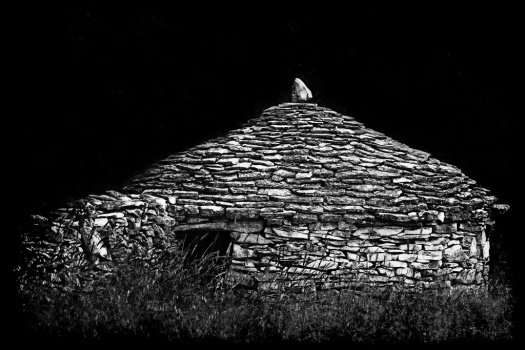
The area around the Adriatic sea is a scares landscape characteristic for many of the Mediterranean countries. From Italy over Slovenia, Croatia down to Albania you can see dry stone walls and round dome-like structures build in the same technic. These can be found in the rare fields and hill sites surrounded by stone and vegetation in the karstic landscape. These buildings catch the eye of many visiting these countries over the summer months. The culture and heritage of traditional stone buildings appear all over the Mediterranean basin and are part of their identity from Spain to the middle east. I will try to elaborate a little on them, where they can be found and their historical background.
These structures have their roots in prehistory between 2000 to 700 BC. The best-preserved buildings can be found on the island of Sardinia in Italy. The structures on the island are large dry stone structures and are a UNESCO world heritage site. These megalithic stone monuments are known as Nuraghi and are tied to the Bronze age culture of the same name predating the Etruscan civilization. The large tower-like structures are huge made out of several rooms and hallways, built out of large chiseled stone blocks.
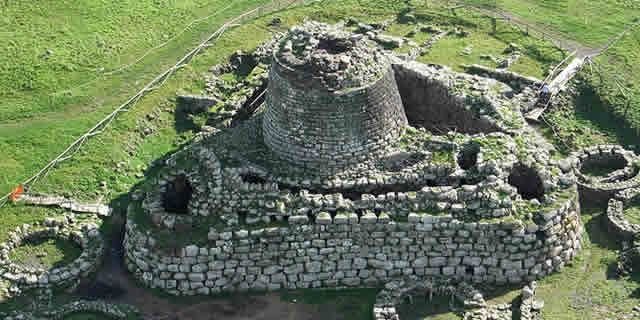
Many of these structures can be found all over the coastal area of Croatia from the north to the south. These structures are knit through the lands from the coast to the hinterland. Together with dry stone walls, these are an integral part of Croatian traditional building technics and heritage left by our forefathers.
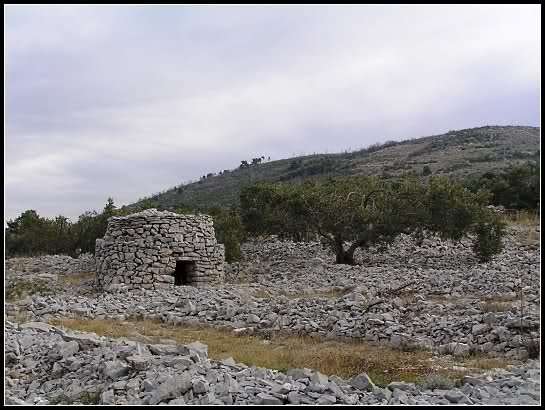
The difference to the prehistoric Italian ones is the size, the Croatian buildings from recent times are a lot smaller. They are not meant for living this is the reason why they are mostly found in the fields. Used for shelter during the day, night and bad weather or for storing materials and tools. During past centuries people in coastal Croatia were mostly sheepherders and farmers working in vineyards and olive groves. Stone can be found here in abundance, mostly from clearing fields, and was further used for stone walls or the round shelters.
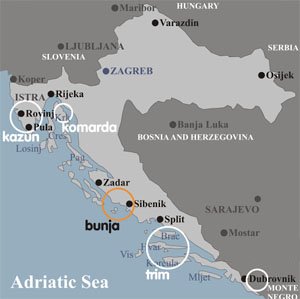
These monuments of the past are a cultural heritage of Croatia and are placed under protection by the state. As they can be found in various regions in Croatia from Istria, Primorije, and Dalmatia building names, styles, and building technics different. In Istria they are known as kažun, in Dalmatia they call them bunja, in the Dalmatian hinterland (Zagora) cemer, on the island of Hvar they are called trim placed at the end of lavender fields. In Slovenia, they go by hiška these structures are common in Italy and are called trullo there. As you see they go by many names but the construction is always the same. The drywall stone buildings are usually round with a dome or stepped roof with no windows and a small doorway.
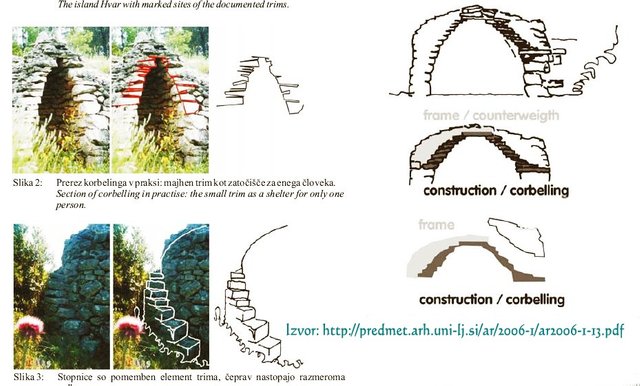
The area of Šibenik-knin county in Dalmatia is particularly rich with bunja buildings and some of them deviate in size and are made into marvels multi-roomed building. The diameter and height vary from building to building some measure four meter on the outside but only two meters on the inside because of the massive stone walls. Like the height differs too some have just about one-meter others over two meters in height.
The walls are built out of large stones stacked on top of each other. The domed roof is built out of smaller stone plates laid down in a ring or spiral pattern so forming the dome. The technic of arching is one of the oldest in the world. On the Dalmatian one's stairs and ramps are attached to them to get easy access to the roof as it was used for drying fruits like figs, apricots, and plums.
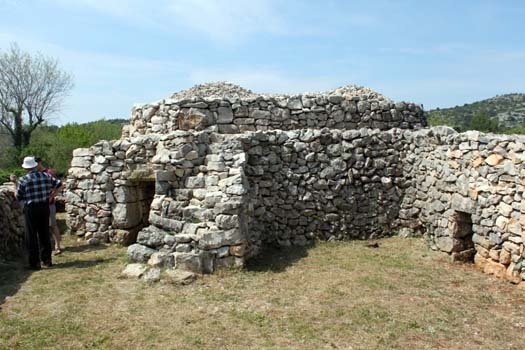
Two exceptional bunja constructions can be found in the Šibenik area the first one is near the town of Vodice and called Rašina bunja, the other one is on Žirije island called Stari stan. These two are special because there are only four know multiroomed buildings like this in Croatia. They are made out of several smaller ones put together into one. It is the only one known with a built hallway made in the technic of a fake arch. So one of the few you can walk in upright, the hallway is 1,3 meters long and 2,3 meters high. The two rooms connected are more than 3 meters wide and more than 3 meters high.
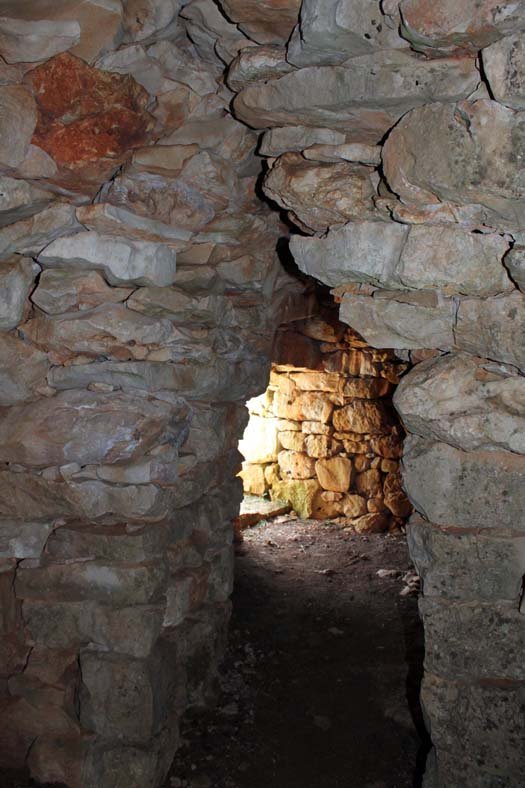
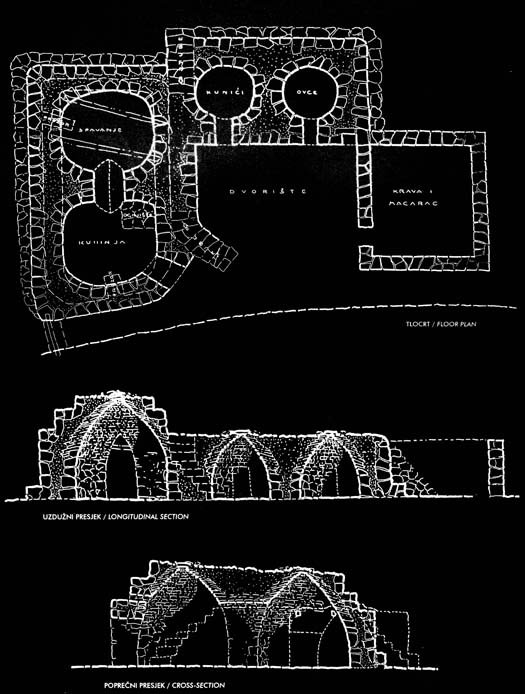
These stone monuments are witnesses to the centuries that have passed on, they tell a tale of people and their way of life. Today great expenses are undertaken to preserve those structure by the government and local associations and individuals. This was a short overview of this topic but I hope I got you interested in some more research on the bunja structures or even to go out and detect some of your self on your next holiday here. If you come around one you should check out the online register made by the association Dragodid, there you can find a map with known buildings. If you come upon an undiscovered you can register it on the website with a few pictures and GPS coordinates
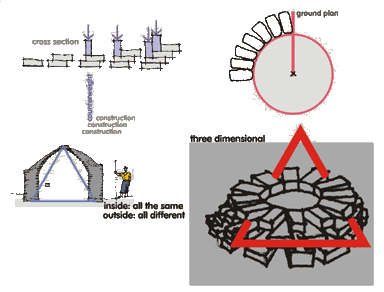
Sometimes I wonder how people we called premitve could build such magnificent structures that have survived the test of time over the years. It quit fascinating
That is true. People did not have much and made due with what they had and they did it well
Yes you right. And as a matter of fact mordern structures are built on the basis of theses ancient structures. Cool posts I must say
Followed you hoping you could follow back
Thanks a bunch
👏 check out my page when you get a chance
will do that definatly
Thanks
This post has received a 0.02 % upvote from @drotto thanks to: @banjo.
Odlican i divan tekst @zija2022, meni u glavi svo vreme dok citam otok Pag sa njegovim kilometraskim suhozidovima..
Hvala @jungwatercolor, istina na Pagu su krasni suho zidi ali se i u ostatku Dalacije pomalao obnavljaju svi suho zidi. I ima jadan otocic u blizi pa cu i o njemu brzo nesto napisati :-)
Interesting post
Thank you, I am glad you liked it. Usually I don't get internationally recognized 😁